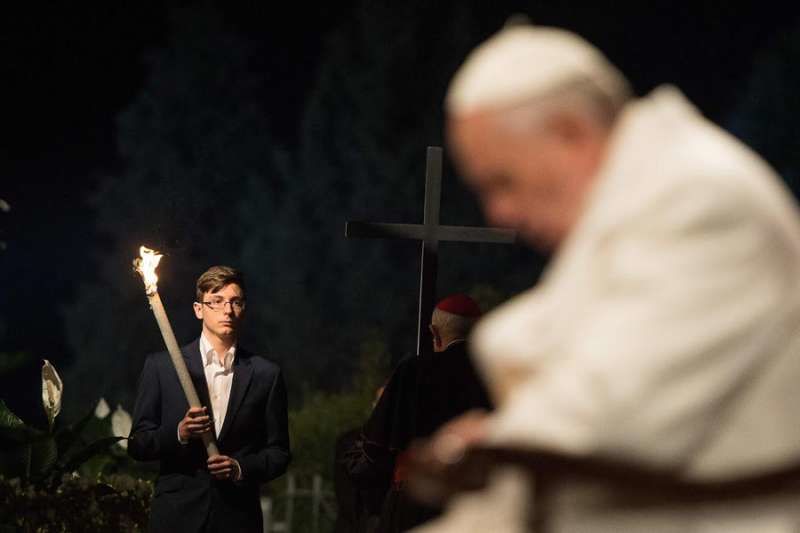As the Vatican gears up for the Synod on youth in October, Pope Francis has chosen a group of Italian high school students to write the meditations for his Good Friday Way of the Cross at the Colosseum.
The Pope tasked religion teacher Andrea Monda with choosing and coordinating the 15 students, who attend a classical high school in Rome.
Marta Croppo, 18, is writing the meditation for the 14th station, when Christ's body was laid in the tomb.
She told CNA March 23 that she thinks Pope Francis wanted young people to write the meditations because of their simplicity and their ability “to communicate another type of message to the world.”
“We are not scholars, and we do not have a theological degree or something like that,” she noted. Therefore, this is “a great occasion for us to talk with simplicity,” relying on our experience of faith and religion in daily life.
Croppo said that in her meditation she did not want to speak about a social problem or “send a message to youth,” but to reflect on more existential themes. “I wanted to emphasize the human side of Jesus, because he is God, but he is human as well,” she said.
“He has suffered, and he has died just like us, so I wanted to talk about this aspect and the fact that he’s very near, [that] he comprehends deeply our condition of suffering and of sorrow.”
In the 10th station Jesus is stripped of his garments. Greta Giglio, 18, said that in her reflection on this station she tried to address present issues, such as immigration, because “immigrants, like Christ in that specific moment, come lacking everything.”
Monda said that he sees the Pope’s choice to entrust young people with the Via Crucis reflections as being in line with the greater focus of his pontificate, “trying to give a voice to those who have no voice.”
In Monda’s view, young people are also often at the peripheries. But Pope Francis says not to speak only about youth or to youth, but to “let the youth talk and then listen to them.”
The last time the reflections for the Via Crucis were written by young people was in 2013, when Benedict XVI asked youth from Lebanon to write them after visiting the country the previous September.
Those meditations were written by 45 young Lebanese between the ages of 17 and 30 and were focused on unity and peace between Christians and Muslims.
In 2017 the meditations were written by French biblical scholar Anne-Marie Pelletier, who was the fourth woman to do so after St. John Paul II first started the practice, inviting Mother Anna Maria Canopi from the Benedictine abbey “Mater Ecclesiae” in 1993.
In recent years they have mostly been penned by Italian bishops; notably, in 2015, they were written by Bishop Emeritus Renato Corti of Novara, who preached the final Lenten spiritual exercises for St. John Paul II the week before his April 2, 2005 death.
The Roman tradition of holding the Way of the Cross at the Colosseum on Good Friday goes back to the pontificate of Benedict XIV, who died in 1758.
After dying out for a period, the tradition was revived in 1964 by Bl. Paul VI, while under St. John Paul II the Way of the Cross at the Colosseum became a worldwide television event; the Pope himself used to carry the cross.
Now the cross is usually carried by individuals and families — including religious and laity — from around the world.
The Pope personally selects who writes the meditations for the stations, and the choice can indicate issues the Pope wants to zero in on.
In 2017, the Via Crucis at the Colosseum was attended by around 20,000 people.

